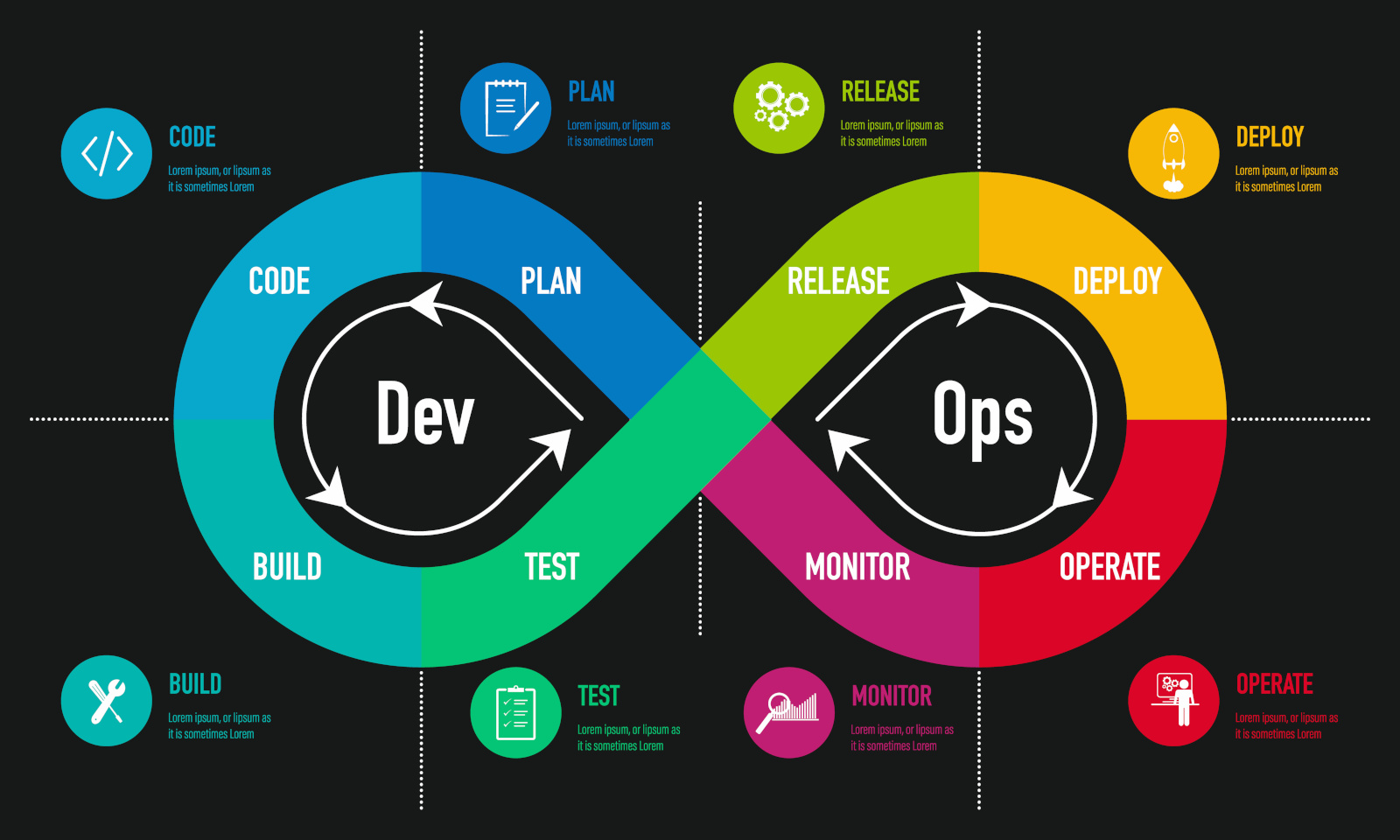Automate Your Software Development Workflow with DevOps Essentials
 Abdul Rafay Khan
Abdul Rafay KhanTable of contents
- 1. Understanding DevOps: A Culture of Collaboration and Automation
- 2. CI/CD Pipelines: The Heart of DevOps Automation
- 3. Containerization with Docker: Consistent and Scalable Deployments
- 4. Infrastructure as Code (IaC): Automating Infrastructure Management
- 5. Monitoring and Logging: Ensuring Stability and Performance
- 6. Best Practices for DevOps Culture: Embracing Automation
- Conclusion

In the rapidly evolving world of software development, DevOps has emerged as a crucial practice that bridges the gap between development and operations teams. The core principles of DevOps emphasize collaboration, continuous integration, and delivery, all underpinned by a strong culture of automation. Automating the software development lifecycle (SDLC) is vital in achieving faster, more reliable releases, and maintaining a consistent production environment. This article will delve into how automation within DevOps can revolutionize your development workflow, making it more efficient, scalable, and responsive to change.
1. Understanding DevOps: A Culture of Collaboration and Automation
At its core, DevOps is a cultural shift that fosters close collaboration between development (Dev) and IT operations (Ops) teams. The primary goal is to shorten the development lifecycle while delivering high-quality software continuously. DevOps is not just about tools; it’s a mindset that emphasizes shared responsibility, transparency, and continuous improvement.
Automation is the backbone of DevOps, enabling teams to streamline repetitive tasks, reduce human error, and maintain a consistent environment across development, testing, and production. By automating key aspects of the SDLC, teams can focus on more strategic tasks, ultimately accelerating the delivery of software.
2. CI/CD Pipelines: The Heart of DevOps Automation
Continuous Integration (CI) and Continuous Delivery (CD) are fundamental practices in DevOps that aim to ensure code changes are continuously tested, integrated, and delivered to production. A CI/CD pipeline automates the process of building, testing, and deploying code, allowing teams to release updates quickly and reliably.
Continuous Integration (CI): Developers frequently merge code changes into a shared repository. Each merge triggers an automated build and testing process. This practice ensures that code changes are continuously integrated, reducing the chances of integration conflicts and enabling early detection of defects.
Continuous Delivery (CD): Once the code passes the CI stage, it is automatically deployed to staging or production environments. Continuous delivery ensures that the codebase is always in a deployable state, allowing teams to release features on-demand with minimal manual intervention.
Tools like Jenkins, CircleCI, and GitLab CI are commonly used to set up and manage CI/CD pipelines, offering plugins and integrations that support various stages of the SDLC.
3. Containerization with Docker: Consistent and Scalable Deployments
Containerization is a critical technology in DevOps that packages an application and its dependencies into a single, portable container. Docker is the most widely used containerization platform, enabling developers to create lightweight, consistent environments that work seamlessly across different machines and environments.
Docker Containers: Docker allows developers to build containers that include the application code, runtime, libraries, and dependencies. These containers can be easily shared and run on any environment that supports Docker, ensuring consistency across development, testing, and production environments.
Docker Compose: For complex applications that require multiple containers, Docker Compose can be used to define and manage multi-container applications. This tool enables developers to define the application’s services, networks, and volumes in a single YAML file, making it easier to manage and scale.
Containerization with Docker simplifies the deployment process, reduces compatibility issues, and enhances the scalability of applications. It also integrates well with CI/CD pipelines, allowing for automated testing and deployment of containerized applications.
4. Infrastructure as Code (IaC): Automating Infrastructure Management
Infrastructure as Code (IaC) is a DevOps practice that involves managing and provisioning computing infrastructure through machine-readable code, rather than manual processes. IaC allows teams to automate the setup, configuration, and management of infrastructure, ensuring consistency and reducing the risk of human error.
Terraform: Terraform is an open-source IaC tool that allows developers to define and provision infrastructure across multiple cloud providers using a simple, declarative language. Terraform’s state management and execution plans ensure that infrastructure changes are predictable and consistent.
Ansible: Ansible is a popular configuration management tool that automates the provisioning and configuration of infrastructure. It uses a simple, agentless architecture and YAML-based playbooks to define tasks, making it easy to automate complex workflows.
IaC not only streamlines infrastructure management but also makes it possible to version control and track infrastructure changes, similar to how code is managed. This practice is essential for maintaining a reliable and scalable infrastructure, especially in cloud-based environments.
5. Monitoring and Logging: Ensuring Stability and Performance
Effective monitoring and logging are critical to maintaining the stability and performance of applications in a DevOps environment. Automation in monitoring and logging allows teams to proactively identify issues, analyze trends, and optimize system performance.
Monitoring Tools: Tools like Prometheus, Nagios, and Datadog provide real-time monitoring of system metrics, alerting teams to potential issues before they impact users. Automated monitoring can track various aspects of the system, including CPU usage, memory consumption, network traffic, and application performance.
Logging Tools: Centralized logging solutions like ELK Stack (Elasticsearch, Logstash, Kibana) and Splunk aggregate logs from different sources, enabling teams to search, analyze, and visualize log data. Automated logging helps teams diagnose issues, track user behavior, and ensure compliance with regulatory requirements.
By automating monitoring and logging, DevOps teams can maintain high availability, quickly respond to incidents, and continuously improve system performance.
6. Best Practices for DevOps Culture: Embracing Automation
To fully realize the benefits of DevOps, it’s essential to cultivate a culture that embraces automation and continuous improvement. Here are some best practices to foster a DevOps culture within your organization:
Foster Collaboration: Encourage collaboration between development, operations, and other stakeholders. Cross-functional teams should work together to design, develop, and deploy applications.
Automate Everything: Strive to automate as many tasks as possible, from code integration and testing to infrastructure provisioning and monitoring. Automation reduces human error, speeds up processes, and frees up time for innovation.
Implement Feedback Loops: Continuous feedback is crucial for identifying and addressing issues early. Implement feedback loops at every stage of the SDLC, from code reviews to post-deployment monitoring.
Embrace Continuous Learning: DevOps is an evolving practice. Encourage team members to stay updated with the latest tools, technologies, and methodologies. Continuous learning and experimentation are key to staying ahead in the DevOps landscape.
Measure and Optimize: Regularly measure key performance indicators (KPIs) such as deployment frequency, lead time for changes, and mean time to recovery (MTTR). Use this data to identify bottlenecks and optimize your DevOps processes.
Conclusion
DevOps and automation are transforming the software development landscape by enabling faster, more reliable, and scalable deployments. By embracing CI/CD pipelines, containerization, infrastructure as code, and automated monitoring and logging, organizations can streamline their development workflows and deliver high-quality software with confidence. Cultivating a DevOps culture that prioritizes collaboration, automation, and continuous improvement is essential for success in today’s competitive environment.
As you continue to refine your DevOps practices, remember that automation is not just a tool but a fundamental aspect of a successful DevOps strategy. By automating key aspects of the SDLC, you can achieve greater efficiency, reduce risks, and focus on delivering value to your customers.
Subscribe to my newsletter
Read articles from Abdul Rafay Khan directly inside your inbox. Subscribe to the newsletter, and don't miss out.
Written by

Abdul Rafay Khan
Abdul Rafay Khan
Hi, I’m Abdul Rafay Khan! I’m a software engineer with a passion for full stack development. I enjoy solving coding challenges and helping others in the tech community. Along with my love for coding, I provide a range of digital services, including web and app development, SEO, eCommerce solutions, and social media marketing. I’m here to share my knowledge, learn from others, and contribute to the growing world of technology. Let’s connect, collaborate, and create digital success together!